Cable TV: Lots of Viewers, Little Profit
Back to Contents of Issue: February 2003
|
|
|
|
by Sumie Kawakami |
|
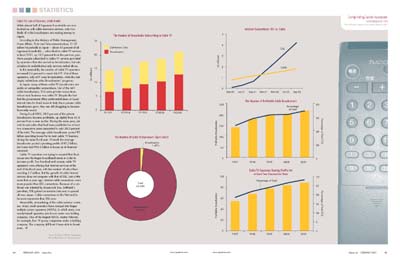 According to the Ministry of Public Management, Home Affairs, Posts and Telecommunications, 21.25 million households in Japan -- about 45 percent of all Japanese households -- subscribed to cable TV services in fiscal 2001, up 13.5 percent from the previous year. More people subscribed to cable TV services provided by operators that also served as broadcasters, but subscriptions to redistribution-only services inched down. 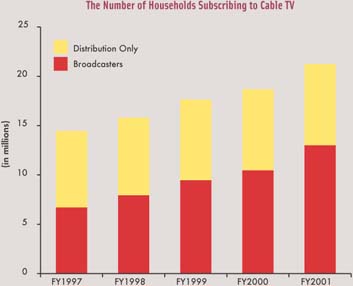
In the meanwhile, the number of cable TV operators increased 2.6 percent to reach 44,619. Out of these operators, only 669 were broadcasters, while the rest simply redistribute other broadcasters' programs. In Japan, many of these cable TV broadcasters are public or semi-public corporations. Out of the 669 cable broadcasters, 314 were private corporations whose main business was cable TV. Despite the fact that the government offers preferential taxes or lower interest rates for bank loans to help these private cable broadcasters grow, they are still struggling to become financially sound. 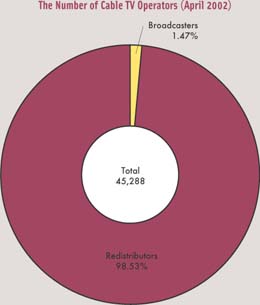
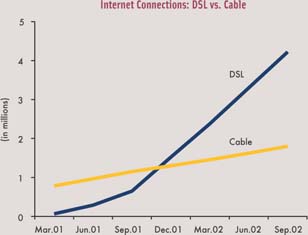
During fiscal 2001, 68.8 percent of the private broadcasters became profitable, up slightly from 63.4 percent from a year earlier. During the same year, private broadcasters that had been profitable for at least two consecutive years amounted to only 28.3 percent of the total. The average cable broadcaster posted 3 billion yen operating losses for its main cable TV business during the same fiscal year. Overall, the average broadcaster posted operating profits of 2.2 billion yen, but it also had 15.3 billion yen in losses on its financial statement. 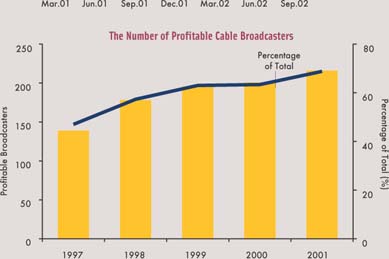
Cable TV operators are trying to expand their businesses into the larger broadband arena in order to increase profit. Two hundred and seventy cable TV operators were offering fast Internet services at the end of the fiscal year, with the number of subscribers reaching 1.7 million. But the growth of cable Internet services does not compare with that of DSL. Just a little more than a year ago, Internet cable connections were more popular than DSL connections. Because of a cut-throat war initiated by Masayoshi Son, Softbank's president, DSL gained momentum last year to spread all over Japan. Cable connections to the Net tend to be more expensive than DSL now. 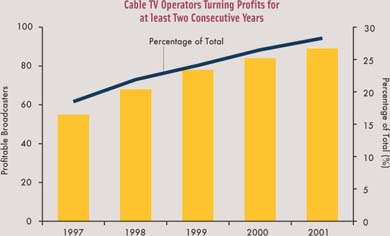
Meanwhile, streamlining of the cable industry continues. Many small operators have merged into larger multiple system operators (MSOs), in which many community-based operators join forces under one holding company. One of the largest MSOs, Jupiter Telecom, for example, has 19 group companies under a holding company. The company still hasn't been able to break even. @ Source: The Ministry of Public Management, Home Affairs, Posts and Telecommunications Compiled by Sumie Kawakami sumie@japaninc.com Note: All statistics apply to Japan unless otherwise noted. |
|
Note: The function "email this page" is currently not supported for this page.






